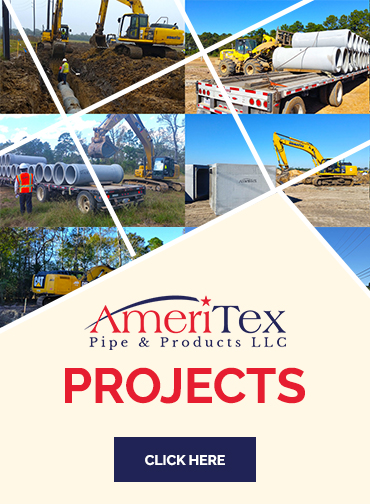Precast Concrete: Building Sustainable Resilience in the Construction Industry
Posted on January 13, 2021
Sustainability isn’t a goal.
 It’s a journey that should’ve started yesterday. Yet, this concept only gains traction around pandemics, disasters, or elections, where candidates use it as a strong pull for votes. But sustainability shouldn’t be treated as a buzzword — sustainable principles need to be a guiding force that gets weaved into the fabric of how all disciplines operate, especially construction and development.
It’s a journey that should’ve started yesterday. Yet, this concept only gains traction around pandemics, disasters, or elections, where candidates use it as a strong pull for votes. But sustainability shouldn’t be treated as a buzzword — sustainable principles need to be a guiding force that gets weaved into the fabric of how all disciplines operate, especially construction and development.
Construction is an industry that uses an exorbitant amount of raw materials and energy. By enforcing sustainable practices, energy conservation, green technology, and building materials, this industry can significantly improve our planet’s health and make things that will last while staying in harmony with our ecosystem.
What is sustainability?
Infrastructure sustainability refers to public and private-sector infrastructure projects that are planned, designed, constructed, operated, and commissioned to ensure economic, social, environmental, and institutional sustainability over the life cycle of the project.
The state of the ecosystem is consistently declining, with several industries contributing to resource depletion and pollution. If we were to continue down this path, we would fail our future generations, just like the previous ones failed us.
The United Nations Brundtland Commission Report defines sustainable development as “that which meets the needs of the present without compromising the ability of future generations to meet their own needs.”
All resources that we utilize to survive and thrive come from the natural environment. Humans must coexist in harmony with nature today, so we and future generations can continue meeting these basic needs.
Sustainability in practice attempts to drive innovation without compromising our present quality of life. There are three fundamental pillars to it, and weakness in any pillar makes the whole system unsustainable.
Environmental: Environmental sustainability means that we consume the planet’s natural resources responsibility. The infrastructure we build today will establish the energy, material efficiencies, water and ecosystem impact for decades to come.
Economic: Economic sustainability requires that a business or owner uses resources efficiently and responsibly while producing profit so it can remain viable in the long run. It essentially means building businesses and products that last and have a positive impact on society and the bottom line.
Social: Social sustainability is the ability of a society or a social system to preserve all its citizens’ wellbeing and quality of life. The social aspect of sustainability addresses a product’s impact on the host and affected communities, including the health, well-being, and equity of individuals and the larger social network.
By implementing practices that strive to achieve all three pillars, the construction industry can immensely protect our global population’s continual growth. Sustainable methods ensure that construction companies save big on energy costs and also enjoy lower material and labor costs while maintaining our planet’s health by using sustainable materials like precast concrete.
What is Precast Concrete?
Precast concrete is concrete that has been prepared, cast, and cured in a controlled environment, like a plant. It’s then taken on-site for installation. One of the biggest strengths of precast concrete is that it significantly reduces manufacturing time since it’s built before starting work on-site.
It’s believed that precast concrete has been part of the construction industry since Ancient Rome since complex underground structures have been found made from precast building components. Currently, it’s being used to create durable and sustainable parking structures, bridges, foundations, entire buildings, culverts, sound walls, curb inlets, catch basins, and more.
What Makes Precast Concrete Sustainable?
Precast concrete fulfills the requirements of the three sustainability pillars. It is environmentally-friendly, economical, and facilitates socially responsible use.
Environmental sustainability: Precast concrete is very durable because and has a low water to cement ratio. Concrete is made of three ingredients — sand, gravel, and cement. When cement is mixed with water, it forms a robust crystalline matrix, which bonds with sand and gravel to produce concrete. While other commonly used construction materials are susceptible to rust, rot, and natural degradation when exposed to elements such as sunlight, moisture, or extreme weather; concrete retains its strength. It gets stronger if there are unhydrated cement particles available to further bind with moisture.
In most climates, the precast concrete’s thermal mass allows it to adapt to either hot or cold temperatures without cracking or getting damaged. It saves energy by delaying the amount of time it takes for its surface to heat up or cool down, reducing the overall energy usage in the building.
The ingredients to make precast concrete can be sourced locally and the product can be built in a local plant, which cuts down on the carbon footprint of transport. Since precast is factory-made and typically manufactured using exact-batch technology, there is little to no waste created either in the plant or on-site. On top of that, with precast concrete products, there’s no risk of toxic byproducts leaching into the ground or into the water supply.
Economic sustainability: Precast concrete structure can be easily disassembled and reused in new facilities. The disassembled components retain little to no damage because of its high strength and durability.
Precast concrete products can also be downcycled. They can be broken or crushed and used to build new structures like sidewalks, roads, or concrete slabs. Downcycling will not affect its durability and uses little energy.
Additionally, precast drainage structures can be installed faster than other materials. Because precast drainage structures are an engineered product and not an engineered installation, the products are less likely to be susceptible to installation error. This means less labor is required on-site, and there is less waste from manufacturing defects or field modifications.
Since buyers can purchase precast concrete components in bulk for multiple products, suppliers often offer discounts, which helps companies save money that can be allocated elsewhere.
Social sustainability: Precast concrete contains recycled materials that are often a byproduct of other industries. Some of them include Fly ash, slag, and silica fume, which typically would be shipped off to the dump/landfill, can instead be used in precast concrete. These ingredients reduce the waste in landfills and oceans and lower the amount of cement needed to make precast concrete.
Concrete products are benign, don’t emit any gases, toxic compounds, or volatile organic compounds that could potentially leak into drinking water. This ensures that even allergy sufferers can safely dwell inside sites made of precast concrete without being a victim of “sick building syndrome.”
Since the plant where precast concrete is made contains less dust, it instills a healthy working environment and protects on-site workers from being exposed to bad air quality since factories are better equipped to shield employees from hazardous conditions.
With natural disasters, especially wildfires and flooding, on the rise, we need to create structures that are resistant to damage and resilient. Precast concrete is non-combustible. Concrete can actually help contain a fire and prevent it from spreading through the buildings or between structures. In the event of a wildfire, precast concrete walls provide shelter to humans and their possessions. And even after the fire, the concrete can be restored once the other parts of the building are fixed.
Concrete is water resilient and is suitable to be used in flood barrier designs, its durable material composition leads to negligible structural damage during a flooding events and it will not float away like other materials.
The Future of Sustainable Concrete
Sustainable concrete is the future of eco-friendly construction. The ingredients that make up precast concrete promotes environmental sustainability by creating a durable and energy-efficient structure. It fosters economic sustainability by enabling the reuse of products and downcycling. It facilitates social sustainability by giving the employees safer workplace conditions since it’s benign and non-toxic to everything around it, including drinking water.
Precast concrete structures last decades and survive jarring natural disasters. They require fewer repairs and replacements, reducing the need for more concrete.
The concrete industry is on the way to achieving its goal of becoming carbon neutral by 2050, in part because it emits no greenhouse gases over its usage, frees up landfills, reduces energy usage and raw material consumption by allowing for recycling — we are working closely with our partners in the cement industry to ensure a sustainable product with a reduced carbon footprint.
To learn more about sustainable engineering practices, make sure to check out Tiffany Reed-Villarreal’s LinkedIn page for more information.


